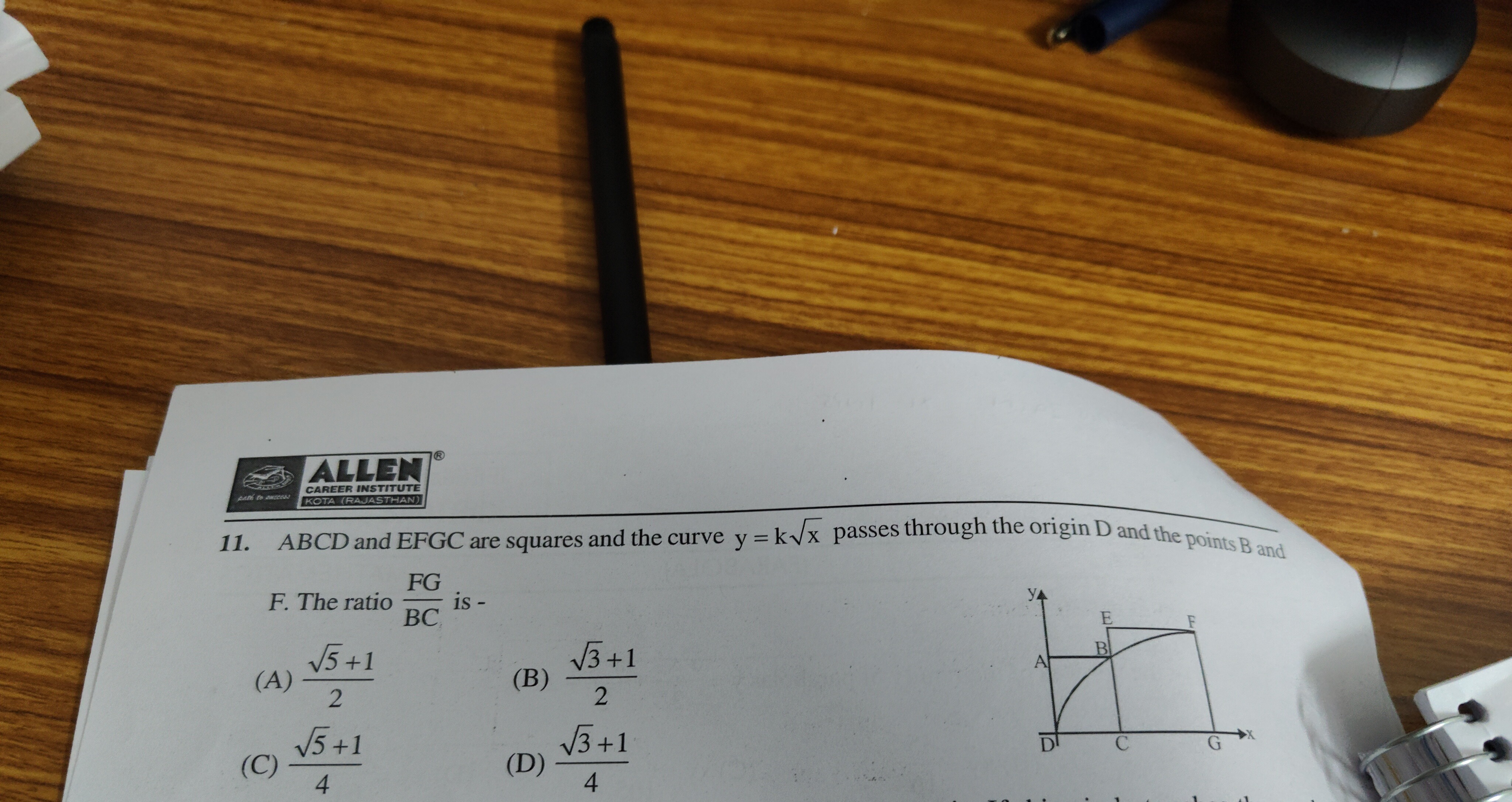Question
Question: ABCD and EFGC are squares and the curve y = k√x passes through the origin D and the points B and F. ...
ABCD and EFGC are squares and the curve y = k√x passes through the origin D and the points B and F. The ratio BCFG is -

25+1
23+1
45+1
43+1
25+1
Solution
Let the side length of square ABCD be s1 and the side length of square EFGC be s2. Since D is the origin (0,0) and ABCD is a square with C on the x-axis, the coordinates are D(0,0), C(s1, 0), B(s1, s1), and A(0, s1). Thus, BC = s1. Since EFGC is a square with GC on the x-axis and G to the right of C, the coordinates are G(s1+s2, 0), F(s1+s2, s2), and E(s1, s2). Thus, FG = s2.
The curve y=kx passes through D(0,0), B(s1, s1), and F(s1+s2, s2). Since B(s1, s1) is on the curve: s1=ks1 Squaring both sides, s12=k2s1. Since s1>0, we get s1=k2, which means k=s1 (assuming k>0 from the graph).
Since F(s1+s2, s2) is on the curve: s2=ks1+s2 Substitute k=s1: s2=s1s1+s2 Squaring both sides: s22=s1(s1+s2) s22=s12+s1s2 Rearranging the terms, we get a quadratic equation in s2: s22−s1s2−s12=0
We need to find the ratio BCFG=s1s2. Let r=s1s2. Divide the equation by s12: (s1s2)2−s12s1s2−s12s12=0 r2−r−1=0
Using the quadratic formula to solve for r: r=2(1)−(−1)±(−1)2−4(1)(−1) r=21±1+4 r=21±5
Since s1 and s2 are lengths, they are positive, so their ratio r must be positive. Therefore, we take the positive root: r=21+5
The ratio BCFG=s1s2=21+5.
